Results: Frequency response of sound w/o obstacles
It is made in the same injection mould as the FC120, but still has noticeably better properties. Stronger material, higher weight, different bearings and a more powerful motor make the FK120 one of the most attractive options among inexpensive fans. But that’s only assuming the “right” adjustment. Outside of that, this fan can be quite uncomfortable and ironically for the same reason it is sometimes unbeatable.
Results: Frequency response of sound w/o obstacles
Measurements are performed in the TrueRTA application, which records sound in a range of 240 frequencies in the recorded range of 20–20,000 Hz. For the possibility of comparison across articles, we export the dominant frequency from the low (20–200 Hz), medium (201–2,000 Hz) and high (2,001–20,000 Hz) range to standard bar graphs.
However, for an even more detailed analysis of the sound expression, it is important to perceive the overall shape of the graph and the intensity of all frequencies/tones. If you don’t understand something in the graphs or tables below, you’ll find the answers to all your questions in this article. It explains how to read the measured data below correctly.
Fan sound usually operates in the 70–7000 Hz band. You can ignore the 7000 Hz frequencies, they reflect the electromagnetic noise of the measurement chain. This (electromagnetic noise) also extends to frequencies below 70 Hz. These bands (up to 70 Hz and above 7 kHz) could be safely “shaved off”, but we don’t do that. Just in case some anomaly does appear in one of the fans, which needs to be controlled and visualised.
| Fan | Dominant sound freq. and noise level, no obstacle@33 dBA | NF-F12 PWM | NF-A15 PWM | ||||
| Low range | Mid range | High range | |||||
| Frequency [Hz] | Noise level [dBu] | Frequency [Hz] | Noise level [dBu] | Frequency [Hz] | Noise level [dBu] | ||
| DeepCool FK120 | 138,5 | -77,5 | 246,8 | -68,6 | 18780,2 | -90,9 | |
| Asus TUF Gaming TF120 | 130,7 | -82,8 | 369,7 | -80,9 | 19897,0 | -90,8 | |
| BeQuiet! Light Wings (BL072) | 23,1 | -71,7 | 380,5 | -72,9 | 18780,4 | -90,8 | |
| DeepCool FC120 | 195,8 | -77,4 | 201,6 | -78,5 | 19330,5 | -90,7 | |
| Nidec Servo Gentle Typhoon D1225C (2150/12) | 127,0 | -78,2 | 339,0 | -86,0 | 19330,5 | -90,7 | |
| BeQuiet! Shadow Wings 2 (BL085) | 151,0 | -79,8 | 369,7 | -79,0 | 19897,0 | -90,8 | |
| Noctua NF-A12x25 PWM | 50,4 | -80,2 | 380,5 | -80,6 | 19897,0 | -90,8 | |
| Corsair AF120 Elite (black) | 130,7 | -76,9 | 369,7 | -81,6 | 19330,5 | -90,7 | |
| Cooler Master MasterFan SF120M | 50,4 | -80,9 | 1566,8 | -87,5 | 4305,4 | -89,2 | |
| Akasa Alucia SC12 | 50,4 | -78,8 | 1566,8 | -91,5 | 19330,5 | -90,7 | |
| BeQuiet! Silent Wings Pro 4 (BL098) | 50,4 | -81,2 | 339,0 | -80,8 | 2712,2 | -87,1 | |
| Thermalright X-Silent 120 | 50,4 | -79,0 | 369,7 | -88,6 | 4974,2 | 87,1 | |
| Fractal Design Aspect 12 RGB PWM | 10,4 | -72,6 | 380,5 | -80,5 | 19897,0 | -90,9 | |
| BeQuiet! Silent Wings 3 (BL066) | 97,9 | -75,2 | 1107,9 | -79,1 | 19897,0 | -90,8 | |
| Gelid Zodiac | 119,9 | -71,1 | 380,5 | -80,9 | 19897,0 | -91,0 | |
| Fractal Design Dynamic X2 GP-12 PWM | 47,6 | -72,8 | 1015,4 | -79,9 | 19897,0 | -90,7 | |
| BeQuiet! Pure Wings 2 (BL039) | 47,6 | -78,3 | 958,9 | -79,6 | 18780,2 | -91,0 | |
| Gigabyte Aorus 120 ARGB | 130,7 | -82,8 | 369,7 | -80,7 | 19330,5 | -90,9 | |
| Arctic BioniX P120 A-RGB | 127,0 | -73,2 | 219,8 | -70,4 | 19897,0 | -90,9 | |
| Akasa OTTO SF12 | N/A | N/A | N/A | N/A | N/A | N/A | |
| Cooler Master SickleFlow 120 ARGB | Cooler Master SickleFlow 120 ARGB | 59,9 | -82,7 | 1076,3 | -83,1 | 19330,5 | -90,7 |
| Alphacool SL-15 PWM | Alphacool SL-15 PWM | 190,3 | -79,1 | 380,5 | -78,8 | 18245,6 | -90,9 |
| Arctic BioniX F120 | Arctic BioniX F120 | 123,4 | -76,5 | 246,8 | -80,0 | 19330,5 | -90,9 |
| SilverStone SST-AP123 | SilverStone SST-AP123 | 100,8 | -81,2 | 415,0 | -78,6 | 19897,0 | -90,8 |
| Noctua NF-P12 redux-1700 PWM | 103,7 | -76,9 | 329,4 | -73,2 | 19330,5 | -90,9 | |
| SilentiumPC Fluctus 120 PWM | SilentiumPC Fluctus 120 PWM | 130,7 | -76,5 | 369,7 | -80,9 | 19897,0 | -91,0 |
| MSI MEG Silent Gale P12 | 50,4 | -81,7 | 369,7 | -81,0 | 19897,0 | -90,8 | |
| Asus ROG Strix XF120 | 50,4 | -80,2 | 329,4 | -76,2 | 19330,5 | -90,8 | |
| Akasa Vegas X7 | 123,4 | -77,0 | 369,7 | -83,3 | 19330,5 | -90,7 | |
| Reeven Coldwing 12 | 38,9 | -79,7 | 1317,5 | -84,0 | 19330,5 | -90,7 | |
| Reeven Kiran | 138,5 | -80,6 | 369,7 | -83,3 | 19330,5 | -90,8 | |
| SilentiumPC Sigma Pro 120 PWM | N/A | N/A | N/A | N/A | N/A | N/A | |
| SilentiumPC Sigma Pro Corona RGB 120 | 92,4 | -83,0 | 369,7 | -78,0 | 18780,2 | -90,8 | |
| SilverStone SST-AP121 | 47,6 | -77,5 | 261,4 | -86,4 | 19330,5 | -91,0 | |
| SilverStone SST-FQ121 | 31,3 | -87,5 | 1208,2 | -79,9 | 19330,5 | -90,9 | |
| Xigmatek XLF-F1256 | 41,8 | -69,7 | 213,6 | -77,3 | 19330,5 | -91,0 |
| Fan | Dominant sound freq. and noise level, no obstacle@39 dBA | NF-F12 PWM | NF-A15 PWM | ||||
| Low range | Mid range | High range | |||||
| Frequency [Hz] | Noise level [dBu] | Frequency [Hz] | Noise level [dBu] | Frequency [Hz] | Noise level [dBu] | ||
| DeepCool FK120 | 38,9 | -78,8 | 246,8 | -67,0 | 19330,5 | -90,9 | |
| Asus TUF Gaming TF120 | 127,0 | -76,0 | 380,5 | -74,6 | 19330,5 | -90,8 | |
| BeQuiet! Light Wings (BL072) | 138,5 | -80,1 | 369,7 | -78,4 | 18780,4 | -90,9 | |
| DeepCool FC120 | 195,8 | -71,5 | 201,6 | -68,0 | 3620,4 | -89,7 | |
| Nidec Servo Gentle Typhoon D1225C (2150/12) | 190,3 | -69,7 | 380,5 | -73,8 | 18780,2 | -91,0 | |
| BeQuiet! Shadow Wings 2 (BL085) | N/A | N/A | N/A | N/A | N/A | N/A | |
| Noctua NF-A12x25 PWM | 23,1 | -73,9 | 369,7 | -74,1 | 19897,0 | -90,7 | |
| Corsair AF120 Elite (black) | 164,7 | -79,2 | 339,0 | -72,8 | 19897,0 | -90,7 | |
| Cooler Master MasterFan SF120M | 146,7 | -78,8 | 380,5 | -77,9 | 2635,0 | -83,9 | |
| Akasa Alucia SC12 | 151,0 | -80,6 | 226,3 | -73,4 | 19897,0 | -90,7 | |
| BeQuiet! Silent Wings Pro 4 (BL098) | 20,3 | -76,0 | 339,0 | -73,9 | 2791,7 | -83,3 | |
| Thermalright X-Silent 120 | 119,9 | -74,0 | 369,7 | -75,0 | 10540,1 | -88,4 | |
| Fractal Design Aspect 12 RGB PWM | 10,4 | -64,7 | 380,5 | -72,4 | 18780,2 | -90,8 | |
| BeQuiet! Silent Wings 3 (BL066) | 130,7 | -70,1 | 369,7 | -75,2 | 18780,2 | -90,9 | |
| Gelid Zodiac | 146,7 | -66,0 | 369,7 | -73,4 | 19330,5 | -90,9 | |
| Fractal Design Dynamic X2 GP-12 PWM | 113,1 | -78,5 | 329,4 | -74,6 | 18780,2 | -90,9 | |
| BeQuiet! Pure Wings 2 (BL039) | 130,7 | -76,1 | 369,7 | -75,3 | 19330,5 | -90,7 | |
| Gigabyte Aorus 120 ARGB | 127,0 | -63,9 | 380,5 | -74,2 | 19330,5 | -90,6 | |
| Arctic BioniX P120 A-RGB | 50,4 | -77,9 | 439,7 | -72,4 | 18780,2 | -91,1 | |
| Akasa OTTO SF12 | 155,4 | -67,1 | 380,5 | -75,2 | 4431,5 | -87,2 | |
| Cooler Master SickleFlow 120 ARGB | 109,9 | -72,8 | 1076,3 | -72,4 | 18245,6 | -90,9 | |
| Alphacool SL-15 PWM | 184,9 | -73,4 | 380,5 | -73,1 | 19897,0 | -90,8 | |
| Arctic BioniX F120 | 151,0 | -69,3 | 369,7 | -75,3 | 18780,2 | -91,0 | |
| SilverStone SST-AP123 | SilverStone SST-AP123 | 164,7 | -75,1 | 369,7 | -74,7 | 19330,5 | -90,9 |
| Noctua NF-P12 redux-1700 PWM | 146,7 | -68,0 | 329,4 | -66,7 | 18245,6 | -91,1 | |
| SilentiumPC Fluctus 120 PWM | 190,3 | -69,2 | 380,5 | -68,8 | 19897,0 | -90,9 | |
| MSI MEG Silent Gale P12 | 23,1 | -73,5 | 380,5 | -73,3 | 18780,2 | -90,9 | |
| Asus ROG Strix XF120 | 130,7 | -70,9 | 369,7 | -75,2 | 19330,5 | -91,0 | |
| Akasa Vegas X7 | 127,0 | -77,8 | 369,7 | -76,1 | 19330,5 | -90,9 | |
| Reeven Coldwing 12 | 160,0 | -74,0 | 369,7 | -76,8 | 19330,5 | -90,9 | |
| Reeven Kiran | 184,9 | -75,2 | 369,7 | -75,2 | 17726,2 | -89,8 | |
| SilentiumPC Sigma Pro 120 PWM | 97,9 | -81,7 | 369,7 | -78,1 | 2635,0 | -86,2 | |
| SilentiumPC Sigma Pro Corona RGB 120 | 20,3 | -67,8 | 380,5 | -77,3 | 2487,1 | -85,6 | |
| SilverStone SST-AP121 | 103,7 | -76,2 | 339,0 | -73,4 | 2031,9 | -86,5 | |
| SilverStone SST-FQ121 | 138,5 | -75,2 | 1208,2 | -71,1 | 18780,2 | -90,9 | |
| Xigmatek XLF-F1256 | 190,3 | -77,1 | 761,1 | -75,5 | 19897,0 | -91,1 |
| Fan | Dominant sound freq. and noise level, no obstacle@45 dBA | NF-F12 PWM | NF-A15 PWM | ||||
| Low range | Mid range | High range | |||||
| Frequency [Hz] | Noise level [dBu] | Frequency [Hz] | Noise level [dBu] | Frequency [Hz] | Noise level [dBu] | ||
| DeepCool FK120 | 23,1 | -68,0 | 604,1 | -65,8 | 19897,0 | -91,0 | |
| Asus TUF Gaming TF120 | 23,1 | -66,2 | 380,5 | -70,6 | 2957,7 | -88,1 | |
| BeQuiet! Light Wings (BL072) | N/A | N/A | N/A | N/A | N/A | N/A | |
| DeepCool FC120 | 195,8 | -71,5 | 380,5 | -72,8 | 3417,2 | -85,7 | |
| Nidec Servo Gentle Typhoon D1225C (2150/12) | 25,6 | -68,0 | 239,7 | -62,3 | 2280,7 | -84,1 | |
| BeQuiet! Shadow Wings 2 (BL085) | N/A | N/A | N/A | N/A | N/A | N/A | |
| Noctua NF-A12x25 PWM | 28,3 | -72,5 | 269,1 | -69,8 | 2215,8 | -89,6 | |
| Corsair AF120 Elite (black) | 130,7 | -78,5 | 369,7 | -70,9 | 19330,5 | -90,9 | |
| Cooler Master MasterFan SF120M | 184,9 | -69,7 | 369,7 | -67,9 | 4305,4 | -73,8 | |
| Akasa Alucia SC12 | 130,7 | -70,3 | 380,5 | -68,6 | 2031,9 | -90,4 | |
| BeQuiet! Silent Wings Pro 4 (BL098) | 47,6 | -75,5 | 339,0 | -60,5 | 2791,7 | -83,3 | |
| Thermalright X-Silent 120 | 82,3 | -74,9 | 369,7 | -91,1 | 18780,2 | -91,1 | |
| Fractal Design Aspect 12 RGB PWM | 130,7 | -69,5 | 285,1 | -67,2 | 19330,5 | -90,8 | |
| BeQuiet! Silent Wings 3 (BL066) | 164,7 | -64,2 | 339,0 | -69,1 | 18780,2 | -90,8 | |
| Gelid Zodiac | 184,9 | -61,8 | 380,5 | -68,7 | 18780,2 | -90,8 | |
| Fractal Design Dynamic X2 GP-12 PWM | 146,7 | -72,2 | 391,7 | -71,5 | 2280,7 | -83,1 | |
| BeQuiet! Pure Wings 2 (BL046) | 130,7 | -71,3 | 369,7 | -69,3 | 19330,5 | -90,6 | |
| Gigabyte Aorus 120 ARGB | 160,0 | -61,9 | 369,7 | -70,4 | 2487,1 | -88,3 | |
| Arctic BioniX P120 A-RGB | 151,0 | -67,6 | 369,7 | -72.0 | 2873,5 | -90,6 | |
| Akasa OTTO SF12 | Akasa OTTO SF12 | 190,3 | -66,7 | 380,5 | -67,7 | 4695,1 | -86,3 |
| Cooler Master SickleFlow 120 ARGB | Cooler Master SickleFlow 120 ARGB | 138,5 | -66,7 | 1076,3 | -67,1 | 3835,7 | -89,2 |
| Alphacool SL-15 PWM | Alphacool SL-15 PWM | 151 | -71,5 | 232,9 | -66,5 | 2280,7 | -89,6 |
| Arctic BioniX F120 | Arctic BioniX F120 | 195,8 | -68 | 201,6 | -62,2 | 19330,5 | -90,7 |
| SilverStone SST-AP123 | SilverStone SST-AP123 | 130,7 | -70,9 | 369,7 | -67,7 | 19897 | -90,9 |
| Noctua NF-P12 redux-1700 PWM | Noctua NF-P12 redux-1700 PWM | 184,9 | -62,2 | 369,7 | -67 | 19897 | -91,1 |
| SilentiumPC Fluctus 120 PWM | SilentiumPC Fluctus 120 PWM | 25,6 | -69,6 | 239,7 | -62 | 2957,7 | -90 |
| MSI MEG Silent Gale P12 | MSI MEG Silent Gale P12 | 28,3 | -73,5 | 380,5 | -71 | 2487,1 | -85,9 |
| Asus ROG Strix XF120 | Asus ROG Strix XF120 | 23,1 | -62,9 | 369,7 | -71,7 | 2347,5 | -89,1 |
| Akasa Vegas X7 | Akasa Vegas X7 | N/A | N/A | N/A | N/A | N/A | N/A |
| Reeven Coldwing 12 | Reeven Coldwing 12 | 195,8 | -68,3 | 380,5 | -71,3 | 2031,9 | -90 |
| Reeven Kiran | Reeven Kiran | 130,7 | -73,1 | 219,8 | -70,2 | 17726,2 | -89,4 |
| SilentiumPC Sigma Pro 120 PWM | SilentiumPC Sigma Pro 120 PWM | 138,5 | -70 | 1522,2 | -71,9 | 2560 | -82,9 |
| SilentiumPC Sigma Pro Corona RGB 120 | SilentiumPC Sigma Pro Corona RGB 120 | 190,3 | -70,5 | 369,7 | -66,5 | 2416,3 | -82,4 |
| SilverStone SST-AP121 | SilverStone SST-AP121 | 130,7 | -66,8 | 439,7 | -66,1 | 2347,5 | -90,9 |
| SilverStone SST-FQ121 | SilverStone SST-FQ121 | 127 | -71,2 | 369,7 | -66,5 | 2031,8 | -81,4 |
| Xigmatek XLF-F1256 | Xigmatek XLF-F1256 | 130,7 | -71,5 | 239,7 | -60,9 | 18780,2 | -91,1 |
- Contents
- DeepCool FK120 in detail
- Basis of the methodology, the wind tunnel
- Mounting and vibration measurement
- Initial warm-up and speed recording
- Base 6 equal noise levels…
- ... and sound color (frequency characteristic)
- Static pressure measurement…
- … and airflow
- Everything changes with obstacles
- How we measure power draw and motor power
- Measuring the intensity (and power draw) of lighting
- Results: Speed
- Results: Airlow w/o obstacles
- Results: Airflow through a nylon filter
- Results: Airflow through a plastic filter
- Results: Airflow through a hexagonal grille
- Results: Airflow through a thinner radiator
- Results: Airflow through a thicker radiator
- Results: Static pressure w/o obstacles
- Results: Static pressure through a nylon filter
- Results: Static pressure through a plastic filter
- Results: Static pressure through a hexagonal grille
- Results: Static pressure through a thinner radiator
- Results: Static pressure through a thicker radiator
- Results: Static pressure, efficiency by orientation
- Reality vs. specifications
- Results: Frequency response of sound w/o obstacles
- Results: Frequency response of sound with a dust filter
- Results: Frequency response of sound with a hexagonal grille
- Results: Frequency response of sound with a radiator
- Results: Vibration, in total (3D vector length)
- Results: Vibration, X-axis
- Results: Vibration, Y-axis
- Results: Vibration, Z-axis
- Results: Power draw (and motor power)
- Results: Cooling performance per watt, airflow
- Results: Cooling performance per watt, static pressure
- Airflow per euro
- Static pressure per euro
- Results: Lighting – LED luminance and power draw
- Results: LED to motor power draw ratio
- Evaluation





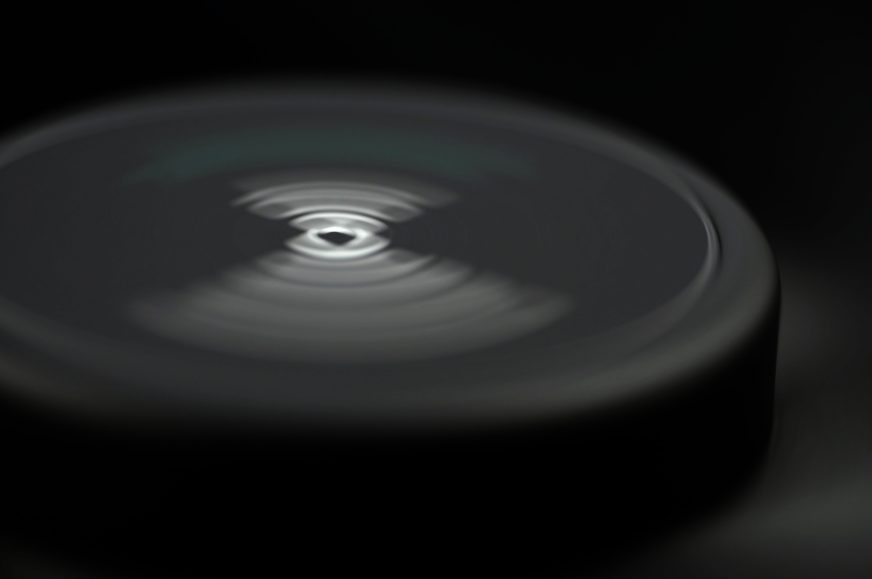
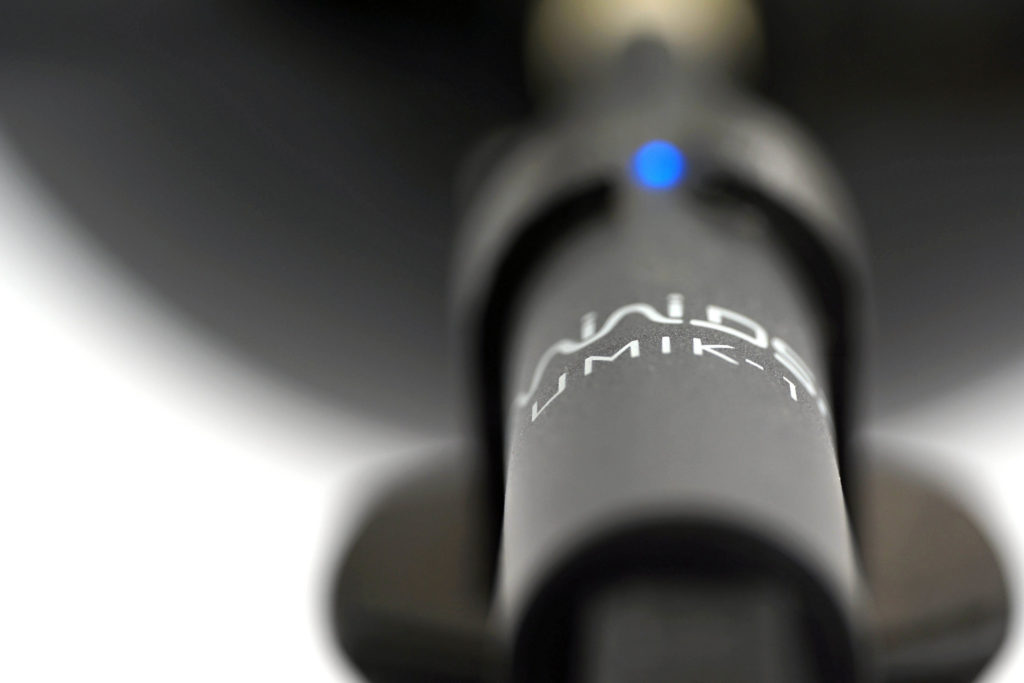
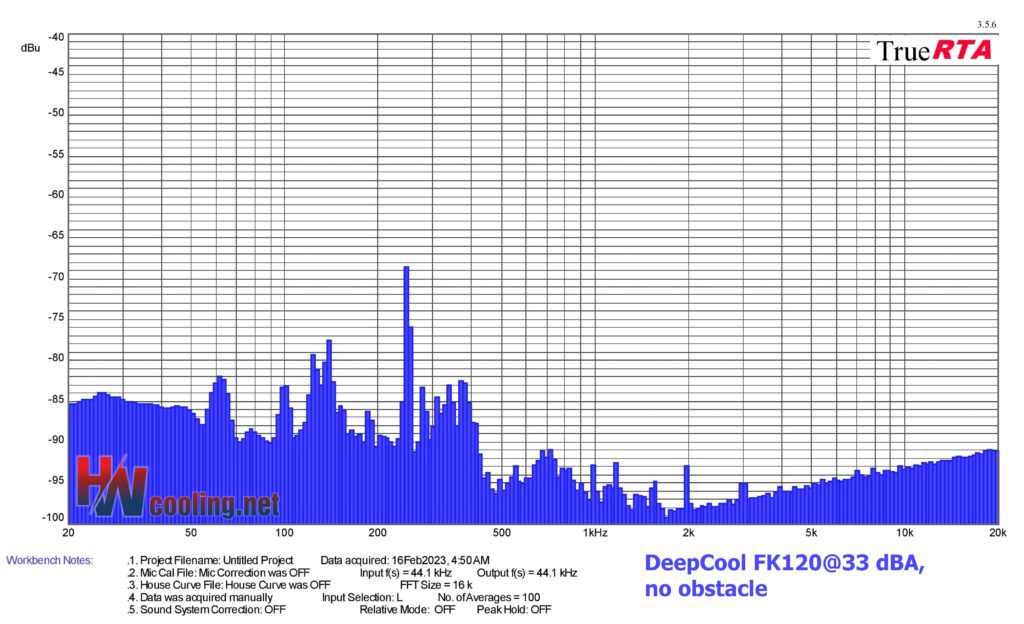
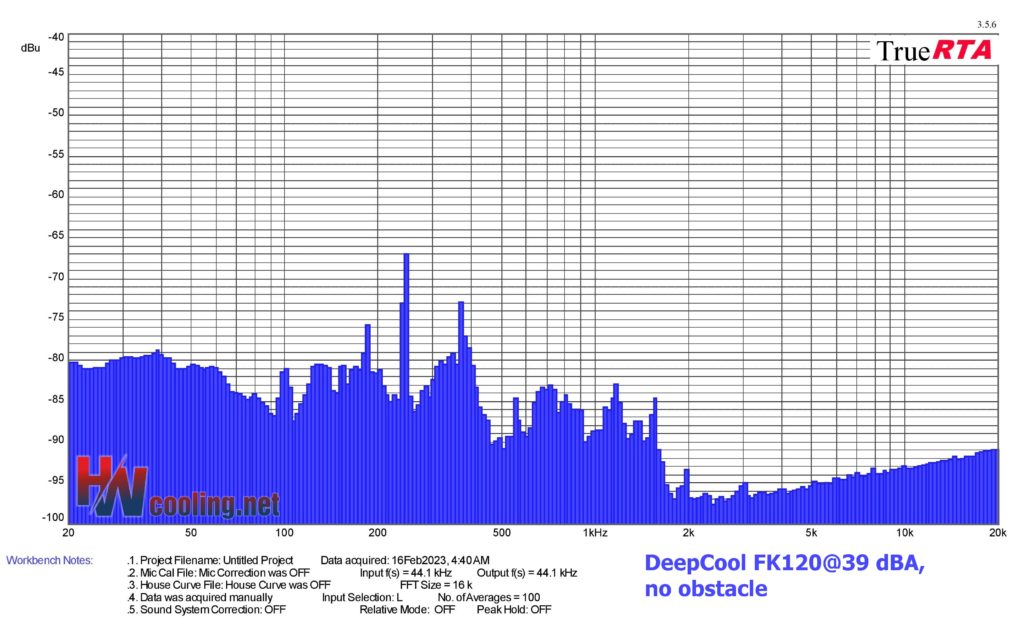
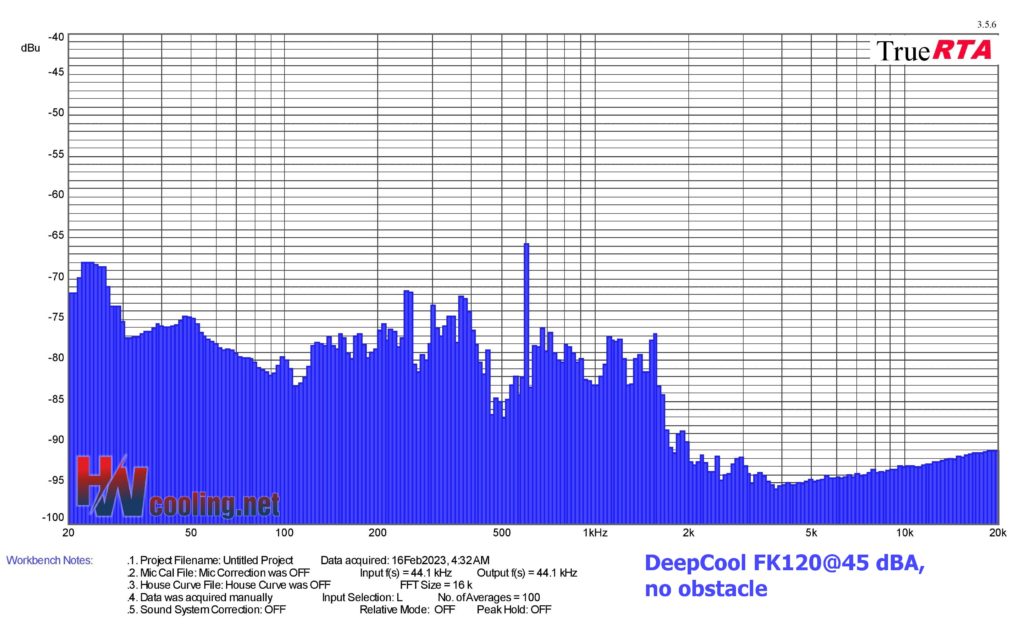



Thank you so much for your hard work bringing us these reviews!
Greetings from Brazil!
Hello
Your expert explanation helped me make my final choice between the two DeepCool FK120 fans and the ASUS ROG Strix fan XF120.
The price difference of these two fans in Iran is insignificant and is around 5 dollars.
Overall, according to your tests, I would choose the Deep Cool fan.
I hope it is the right choice.
Your friend from Iran
Choosing the most suitable fan for a specific scenario is highly complex. In addition to the fact that all situations in practice are more or less different, each has a different set of priorities of individual characteristics. Someone may prefer lower vibrations to a slightly higher airflow, so that the fan does not end up being a source of excessive secondary noise in interaction with, for example, the case.
But when you have looked through our tests, taken a look at the context, evaluated the pros and cons, you must have made the right decision. 🙂
it would be more complex if we had more high quality fans on the market, but nowadays it’s mostly limited to whether you want maximum performance without noise or maximum performance disregarding the noise
in the first case you get A12x25 (or T30 if you have space for that), in the other probably some monster from Delta
if we had high quality fans optimized for specific usecases (like Noctua had in older generations, before releasing the overwhelmingly good A12x25) we could extend that choice to low vs high impedance, but nowadays S12A is entirely irrelevant and their static pressure fans are only used to save money